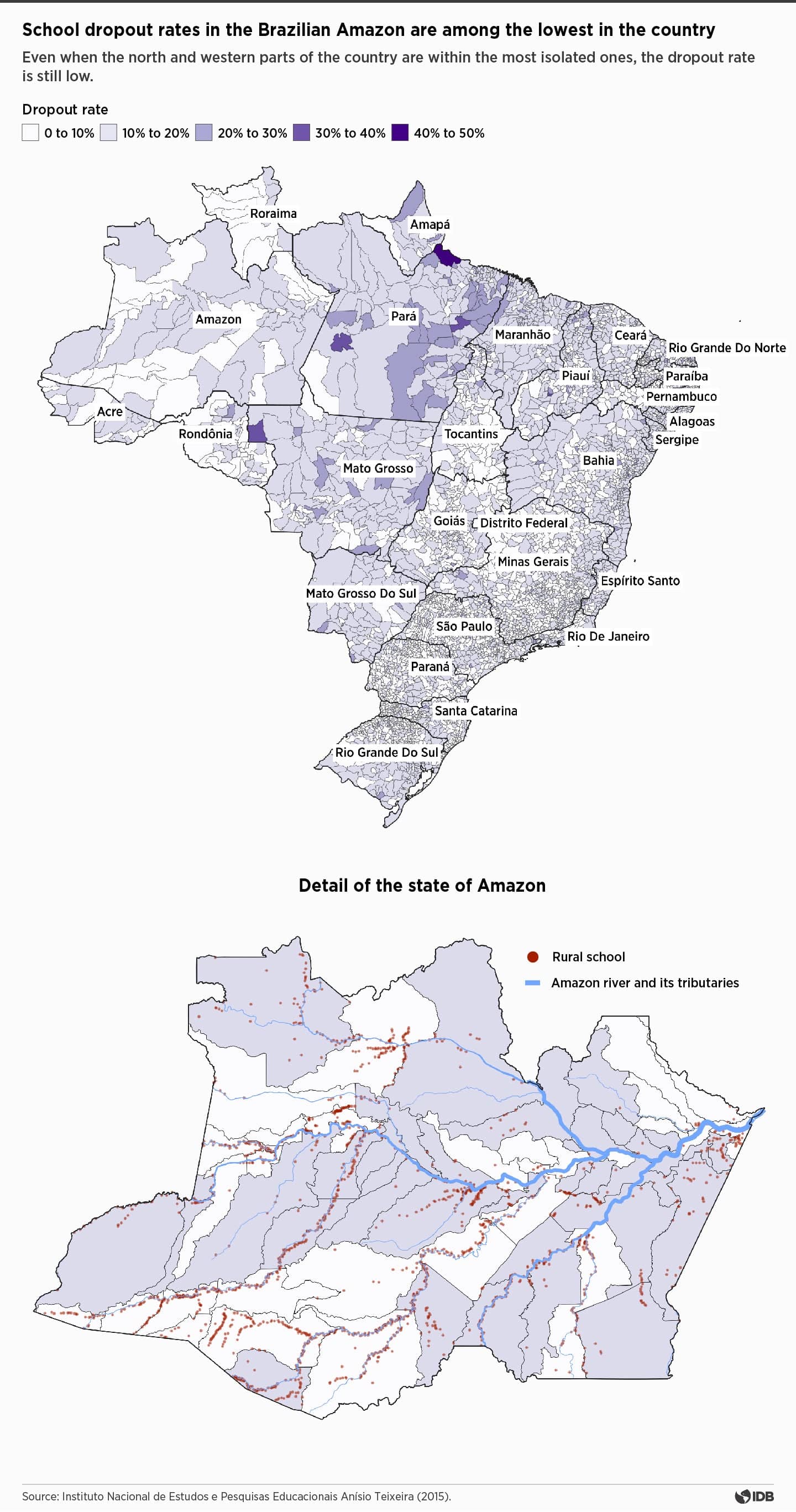
Leia este artigo em Português!
For many young people in Brazil’s rural Amazonian communities, the school day begins and ends in front of a TV. It’s not that school is more fun there; rather, it’s a product of – and an answer to – the remoteness.
Students come to class every morning, just as they would in the city, except the teacher is hundreds of kilometers away. They ask questions through a digital system, and the instructor answers in real time. Another teacher is physically present in the classroom to help students with their work.
Posted by Centro de Mídias de Educação do Amazonas on Thursday, February 14, 2019
"The villages that benefit from the program are small. They have about 1,000 inhabitants, with about 40 kids of secondary-school age," says Emiliana Vegas, head of the Education Division at the IDB. "When we went to visit one of these schools… we met many young people who travel three hours by boat to take the classes.”
Map: Where are the rural communities along the Amazon River Basin in Brazil?
In Manaus, the capital of the northwestern State of Amazonas, teachers work from a satellite-television studio in the state-government-run Media Center. Each instructor, selected and trained by the local government, is a topical specialist. While they are required to follow the federal curriculum, they also have the flexibility to adapt content to their students’ circumstances. In collaboration with the Media Center team, teachers design their study plans and transform them into a digital format. Some use cartoons, while others employ videos and animations. The lessons reach up to 1,000 classrooms.

"The teaching method is different because the classes are more dynamic and full of resources," says Paulo Henrique Gomes de Sousa, a student from the Sacred Heart of Jesus community in the Amazon Basin. "In class, we interacted with two other schools from municipalities in Amazonas that had different accents and customs, and in addition, there were a lot of tools for better learning.”
The distance-education strategy began in 2007 in response to the enormous challenge of educating young people in a country as large and diverse as Brazil. By law, every young person has the right to basic and secondary education, no matter their location; in reality, it is difficult for many rural communities to find quality instructors who can teach all subjects.
View this post on InstagramA post shared by Centro de Mídias do Amazonas (@centrodemidias.am) on Oct 24, 2017 at 11:31am PDT
The problem particularly affects rainforest communities. Amazonas is Brazil’s largest state, with an area nearly 4.5 times the size of Germany. There are about 6,100 rural communities along the Amazon River, where a quarter of the state's population lives. Prior to the new strategy, students who wanted to complete their secondary education had two options: move to Manaus, a multi-day boat trip away, or stop studying altogether.
With financial support from the IDB, the Brazilian government has developed and promoted the promoted the TV strategy within the framework of the Amazon Education Development Acceleration Program (PADEAM). Loans facilitated the construction of 12 schools, the rehabilitation of 20 and updates to 500 others that enabled their participation in the distance-education program.
Currently, more than 50,000 young people from 6,000 rural communities are benefiting – or almost a quarter of secondary-school students from Amazonas, excluding Manaus. In total, more than 300,000 young Brazilians have been part of the initiative, many of whom had dropped out of school. In fact, according to research by the Brookings Institution, the program contributed to reducing the school dropout rate by almost half between 2008 and 2011.
The innovative approach has also earned multiple awards, including a Learning Impact Award from the IMS Global Learning Consortium and a WISE Award from the government of Qatar.
"One of the interesting things is that the state of Pará, which neighbors Amazonas and has similar challenges, adopted the same model and is successfully expanding it," says the IDB’s Vegas. "It's very promising not only for Brazil, but for other countries with remote communities, such as in the Andes or the Caribbean."
"The next step is to have rigorous evidence of the initiative’s impact, which will allow us to go to other countries and expand education in remote areas," she says. "This project is something that we see as very viable for other contexts.”